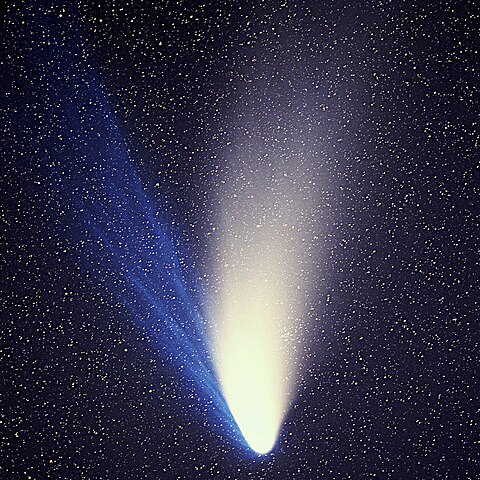Comets have long fascinated scientists and stargazers alike, and their study has led to numerous scientific discoveries that have expanded our understanding of the solar system and the universe. Here are some of the secrets of comets and the scientific insights they have provided:
Composition:
Comets are made up of a mixture of ice, dust, gases, and organic compounds. Analyzing the composition of comets has provided insights into the early solar system’s materials and the building blocks of planets.
Oort Cloud and Kuiper Belt:
The study of comets has led to the discovery of the Oort Cloud and the Kuiper Belt, two distant regions of the solar system where comets originate. These regions are home to a vast number of comets, and their existence helps explain the origins of long-period and short-period comets.
Volatiles:
Comets are rich in volatile compounds like water ice, carbon dioxide, and methane. The release of these volatile gases when a comet approaches the Sun creates the characteristic coma (cloud) and tail, providing insights into the behavior of ices in space.
Solar Wind Interaction:
As comets approach the Sun, they interact with the solar wind, a stream of charged particles emitted by the Sun. Studying this interaction has helped scientists understand the solar wind’s properties and its impact on celestial bodies.
Origin of Earth’s Water:
Comets are thought to contain water similar to that found on Earth. Some scientists believe that cometary impacts could have delivered a significant portion of Earth’s water during the early history of our planet.
Cometary Structure:
Space missions like the European Space Agency’s Rosetta mission have provided detailed images and data about the structure of comets. Rosetta’s lander, Philae, even made the first-ever controlled landing on a comet, giving scientists an up-close look at its surface.
Cometary Activity:
The observation of cometary activity, such as the development of tails and jets, has enhanced our understanding of sublimation (the process of a solid turning directly into a gas) in extreme cold and vacuum conditions.
Asteroid-Comet Connection:
Some small bodies in the solar system exhibit characteristics of both asteroids and comets. Studying these objects has blurred the distinction between asteroids and comets and has provided insights into their origins and evolution.
Impact Hazard:
Comets, like asteroids, have the potential to impact Earth. Although cometary impacts are rarer than asteroid impacts, studying comets helps scientists better assess the impact hazard and develop strategies for planetary defense.
Interstellar Visitors:
Recent discoveries, such as ‘Oumuamua and Borisov, suggest that some objects passing through the solar system could be interstellar visitors from other star systems. These discoveries highlight the potential for comets and asteroids to serve as messengers from distant parts of the galaxy.
Chemical Evolution:
Comets contain organic compounds, including amino acids, which are the building blocks of life. While comets are not believed to be sources of life themselves, they provide valuable insights into the distribution of organic materials in the cosmos and the potential for life elsewhere.
Comets continue to be the focus of scientific exploration and research, with ongoing and planned missions aiming to uncover more of their secrets. These celestial wanderers offer a unique window into the early solar system’s conditions and the processes that have shaped our cosmic neighborhood over billions of years.










